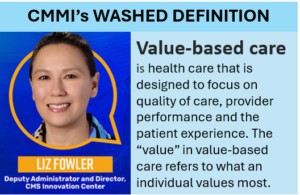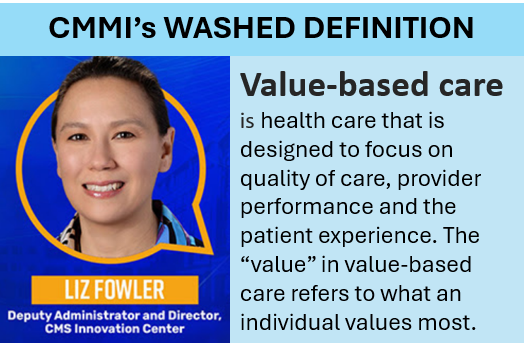
Ron Klar, MD, MPH is a health care consultant with a long history of involvement in federal health care policy and health plan innovation. He published a recent series of three posts regarding the draft rules for the Medicare Shared Savings Program (MSSP) in the Health Affairs Blog, an influential forum for debating health policy issues. This is my third in a series of 4 posts describing areas of agreement and disagreement with Dr. Klar. In my first post, I described areas of agreement. In my second, I covered my disagreements about Dr. Klar’s proposed changes regarding care relationship derivation. In this post, I will describe my disagreement regarding Klar’s proposed changes to the approach to selecting a comparison group for savings assessment.
In the draft MSSP rules, CMS proposed two “options” for methods of selecting the comparison group for determining savings. The rules, following the lead of the health reform legislation language, mislabels the comparison group as a “benchmark.” CMS is not really trying to determine if an ACO is better than or comparable to the best-performing provider organization, as is implied by using the term “benchmark.” What they really intend is to compare the actual cost to the cost that would have been expected to occur if the same beneficiaries had been cared for by non-ACO providers. CMS indicates in the draft rule that they prefer option 1, which involves using the same assignment algorithm in the prior time period as is used for the accountability/performance period. This approach is described as “requalification” in the care management evaluation standards published by the Disease Management Association of America (DMAA). Option 2, for which CMS is seeking feedback, involves using historical information for the cohort of beneficiaries that was actually assigned to the ACO.
 In Dr. Klar’s first post, he explained that he prefers option 2, arguing that option 1 has no “face validity” because the individual beneficiaries will be different. I strongly disagree.
In Dr. Klar’s first post, he explained that he prefers option 2, arguing that option 1 has no “face validity” because the individual beneficiaries will be different. I strongly disagree.
As I noted in my blog post last week, when claims-based patient selection logic is applied, the selection is determined based not only on unchanging characteristics of the person (like gender), but also on data regarding health care events that happened at particular points in time. The person-months in the years before meeting the assignment criteria do not have the same risk as the person-months after meeting the assignment criteria. There is randomness in the timing of events, as people experience peaks and valleys of individual risk. When you select people based on recent health care events, you are not selecting randomly. You are preferentially picking people who tend to be in a risk peak as evidenced by recent health care utilization. Without any intervention, continuing random variation will cause the risk of the selected population to decrease over time, toward the mean risk of the overall population. This is known as a regression-toward-the-mean bias. This type of bias is strongest when the patient is being purposefully selected based on being a high risk outlier, such as when a predictive model is used to generate a risk score used to select patients to be targeted for outreach for a care management program. But, this type of bias exists in a weaker form for any patient selection based on recent health care utilization. Patients naturally have higher risk in the time periods just before and after health care utilization, since they seek health care in response to illness episodes that drive cost. To avoid regression-toward-the-mean bias, I prefer option 1, which offers a symmetrical selection process for the ACO intervention population and the historical comparison population.
Dr. Klar correctly points out that if no risk adjustment is done, ACOs could be incentivized to preferentially seek care relationships with lower risk patients. I feel this should be solved by doing risk adjustment (as has been proposed in the rule), rather than by using option 2.
Klar goes on to propose a variety of additional modifications to the rules that illustrate the complications of using the option 2 pre-post design, such as having to apply a weighted average scheme to deal with people with different numbers of years of available history and people who died during the performance period.

















1 thought on “Klar 3: The necessity of re-qualifying the population to avoid regression-toward-the-mean bias in historical comparison groups”
Pingback: Klar 4: Why is it important for CMS to Share Claims Data with ACOs?